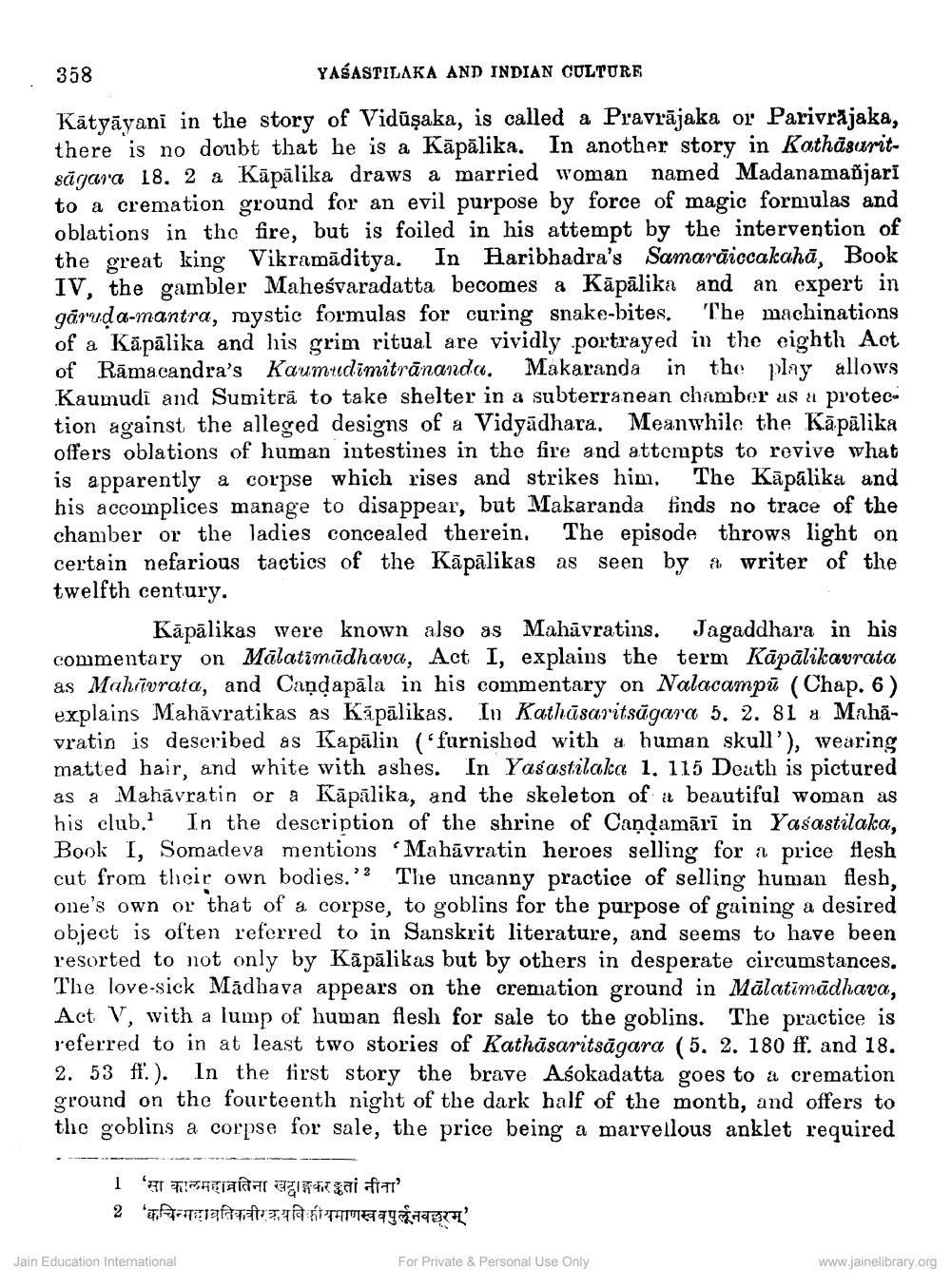________________
YASASTILAKA AND INDIAN CULTURE
Katyayani in the story of Vidūşaka, is called a Pravrajaka or Parivrajaka, there is no doubt that he is a Kapalika. In another story in Kathasaritsagara 18. 2 a Kāpālika draws a married woman named Madanamañjarī to a cremation ground for an evil purpose by force of magic formulas and oblations in the fire, but is foiled in his attempt by the intervention of the great king Vikramaditya. In Haribhadra's Samaraiccakaha, Book IV, the gambler Maheśvaradatta becomes a Kāpālika and an expert in garuḍa-mantra, mystic formulas for curing snake-bites. The machinations of a Kapalika and his grim ritual are vividly portrayed in the eighth Act of Ramacandra's Kaumudimitrānanda. Makaranda in the play allows Kaumudi and Sumitra to take shelter in a subterranean chamber as a protec tion against the alleged designs of a Vidyadhara. Meanwhile the Kapalika offers oblations of human intestines in the fire and attempts to revive what is apparently a corpse which rises and strikes him. The Kapalika and his accomplices manage to disappear, but Makaranda finds no trace of the chamber or the ladies concealed therein. The episode throws light on certain nefarious tactics of the Kapalikas seen by a writer of the
as
twelfth century.
358
Kāpālikas were known also as Mahāvratins. Jagaddhara in his commentary on Mālatīmādhava, Act I, explains the term Kāpālikavrata as Mahavrata, and Candapala in his commentary on Nalacampu (Chap. 6) explains Mahāvratikas as Kāpālikas. In Kathāsaritsāgara 5. 2. 81 a Mahāvratin is described as Kapalin ('furnished with a human skull'), wearing matted hair, and white with ashes. In Yasastilaka 1. 115 Death is pictured as a Mahavratin or a Kapalika, and the skeleton of a beautiful woman as his club.1 In the description of the shrine of Candamari in Yasastilaka, Book I, Somadeva mentions Mahavratin heroes selling for a price flesh cut from their own bodies." The uncanny practice of selling human flesh, one's own or that of a corpse, to goblins for the purpose of gaining a desired object is often referred to in Sanskrit literature, and seems to have been resorted to not only by Kapalikas but by others in desperate circumstances. The love-sick Madhava appears on the cremation ground in Malatimādhava, Act V, with a lump of human flesh for sale to the goblins. The practice is referred to in at least two stories of Kathasaritsagara (5. 2. 180 ff. and 18. 2. 53 ff.). In the first story the brave Aśokadatta goes to a cremation ground on the fourteenth night of the dark half of the month, and offers to the goblins a corpse for sale, the price being a marvellous anklet required
1 'सा कालमहाव्रतिना खदाङ्गकरङ्कृतां नीना'
2 'क्वचिन्महाव्रतिकवीय विकी यमाणस्व व पुलून वरम्'
Jain Education International
For Private & Personal Use Only
www.jainelibrary.org




